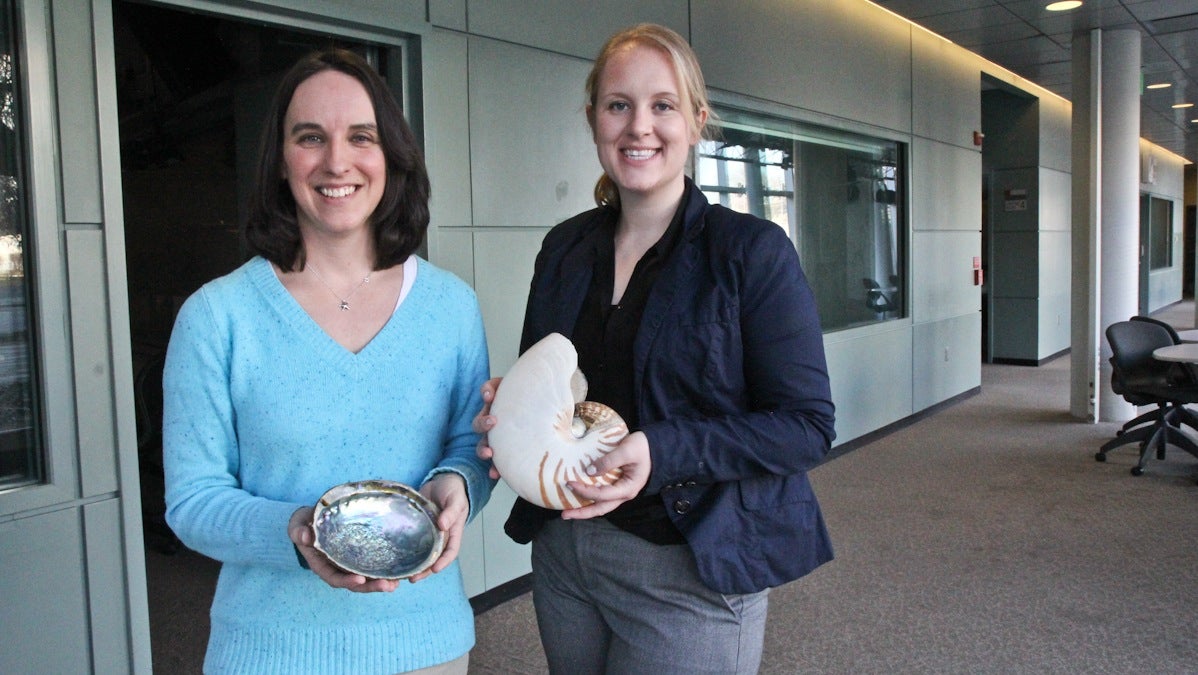Malacologist Amanda Lawless talks marauding African land snails and other mollusks
Listen
Malacologist Amanda Lawless (left) and Teagan Keating show off two of the nearly 10 million specimens in the Academy of Natural Sciences collection. (Kimberley Paynter/for The Pulse)
In this week’s ‘So, What Do You Do?’ segment, public health student Teagan Keating asks Amanda Lawless about her career in malacology.
Amanda Lawless, a scientist at the Academy of Natural Sciences of Drexel University, is a marine biologist, but she’s quick to point out that she has never studied dolphins or seen a whale “in person.”
Lawless is a malacologist, which means she specializes in mollusks, or invertebrates that usually have shells.
She came to the studio with a file box packed with an amazing variety of carefully wrapped shells including colorful scallops, tiny snails and a large, elegant nautilus shell. These were just a small sampling of the 10 million shells catalogued at the Academy. You can browse images of the collection by clicking here.
Master’s of public health candidate and podcaster Teagan Keating interviewed Lawless for this week’s So What Do You Do? segment and Keating made some interesting discoveries. Both women attended “sea camp” as kids in the summer, enjoying the opportunity to “nerd out” with other people who shared their love of marine creatures.
On a less pleasant topic, Lawless talked about the giant African land snail, an invasive species that snuck into Florida as a child’s pet and is greedily decimating the state’s natural flora and fauna. The rampaging mollusks quickly earned a spot on the USDA’s invasive species most wanted list.
Beside’s being destructive, the creature is disturbingly large – easily the size of a man’s hand. To top it off they carry a worm that can infect humans and cause brain damage.
“That’s the worst snail ever!” said Keating.
That may seem like unduly harsh criticism of the snail, but they have thick shells.
WHYY is your source for fact-based, in-depth journalism and information. As a nonprofit organization, we rely on financial support from readers like you. Please give today.



